- Arms
- No suckers abruptly enlarged.
- Arm sucker count 50-60 per arm.
- Suckers sexually dimorphic: larger in males (maximum arm sucker diam. 8.3% of ML in the male, 4.6% in the female).
- First 25-35 suckers similar in size, suckers in males slightly enlarged proximal to web margin, distal ca. 25 suckers relatively small.
- Suckers with simple sucker aperature.
- Single web nodule present at level of 22-24th suckers ventrally on each arm.
- Cirri begin between suckers 4 and 6.
- Cirrus length comparable to largest sucker diameter.
 Click on an image to view larger version & data in a new window
Click on an image to view larger version & data in a new window
Figure. Sucker of G. innominata, longitudinal section. Drawing from O'Shea, 1999.
- Fins
- Length approximately 1.7 times mantle width.
- Length approximately 1.7 times mantle width.
- Gills
- Semi-sepioid appearance.
- 7 primary lamellae (total).
- Digestive tract
- Intestine approximately equal to esophagus (and crop) in length.
- Digestive gland unilobed.
- Anterior and posterior salivary glands absent.
- Radula absent.
- Optic lobe and nerve tract
- Single optic nerve bundle penetrates white body.
- Optic lobe circular in cross-section.
- Female reproductive tract
- Oviducal gland with 2 similar-sized striate structures.
- Proximal oviduct about 1.5 times longer than distal oviduct.
- Genital aperature with 6 finger-like projections.
- Male reproductive tract
- Accessory gland 3 dominates accessory gland complex.
- Penis well developed.
- Beaks
- Beaks as illustrated.
- Pigmentation
- No areolar spots.
- Mantle and head tissues gelatinous but not translucent.
- Dorsal surfaces of mantle, fins, head and arms 1 and 2 pinkish-red.
- Ventral surfaces of mantle, fins, head and arms 3 and 4, and distal margin of fins, darker red.
- Oral surfaces of web and arms maroon.
- Sucker aperatures orange-brown.
- Measurements
Grimpoteuthis innominata: Description Continued
Steve O'Shea, Richard E. Young, and Michael VecchioneReferences
O'Shea, Steve. 1999. The Marine Fauna of New Zealand: Octopoda (Mollusca: Cephalopoda). NIWA Biodiversity Memoir 112: 280pp.
About This Page
Steve O'Shea

Oceanic Sciences Research Institute, Auckland University of Technology, Auckland, New Zealand
Richard E. Young

University of Hawaii, Honolulu, HI, USA
Michael Vecchione

National Museum of Natural History, Washington, D. C. , USA
Page copyright © 2002 Steve O'Shea , Richard E. Young , and Michael Vecchione
All Rights Reserved.
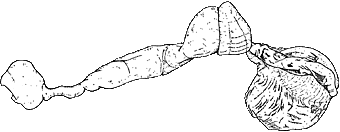
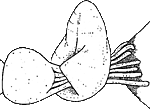
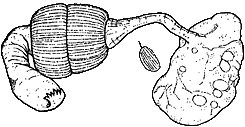
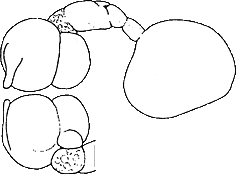
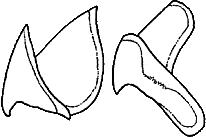


 Go to quick links
Go to quick search
Go to navigation for this section of the ToL site
Go to detailed links for the ToL site
Go to quick links
Go to quick search
Go to navigation for this section of the ToL site
Go to detailed links for the ToL site